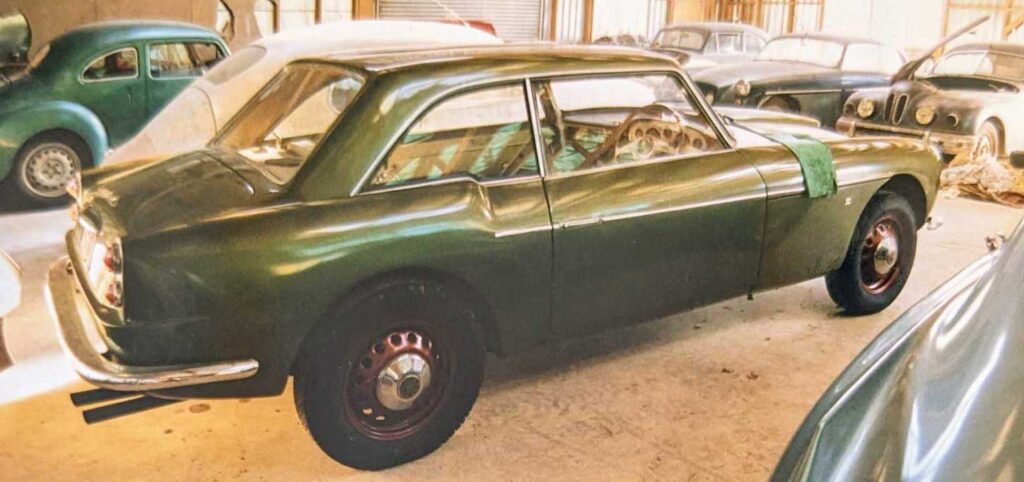VIN: Not suitable for collectibles
The OLD VIN was reasonable

This was a VIN inspection form in 1998. It checked the concerns to ensure the vehicle was safe. This was replaced by a new VIN regime after rogue Kiwi used car importers purchased flood damaged, written-off cars in Japan and sold them as good cars in NZ. The motor trade association was happy with the new rules because it helped them police their industry. Problem: the collectible car industry was not at the table and it became collateral damage.
For a collectible vehicle, a $500 inspection is unnecessary, adding a significant barrier to the health of the collectible ecosystem. Worse, it means an instant fail on 99% of collectible imports, easily adding $11,000 to on-road costs.
There are two philosophies on regulation.
Pragmatic: One says regulations are needed when the people do not police themselves. Regulations are only brought in when the statistics show they are needed. In the collectible motor vehicle sector there are no such statistics. Collectibles are statistically safe, even if they don’t have the computerised safety elements of new cars? Why? Because their owners know how to drive, cherish their vehicles and don’t drive stupid. Crash statistics show what causes injury and death. It’s not the car, it’s bad, impaired or distracted drivers, sometimes complicated by badly-engineered roads.
Obstructive: The other philosophy on regulation lives within regulatory organisations that protect themselves from public criticism and believe everything must be regulated. These regulators are happy to spend other people’s money, and while they ostensibly use a process of consultation, experience shows they hear mostly from those with a pecuniary interest.
The ordinary people who end up paying the bill only complain once the rule is locked in. The regulators tell them they are too late to complain.
The NEW VIN is not
click to zoom
Entry certification 3-4 is a good example of collateral damage.
A late model JDM import should not show signs of repair, rust prevention, surface rust mitigation (acid wash) or undersealing because that suggests it is a substandard import. Unlike most countries that import new cars that then circulate as used, NZ buys vast quantities of Japanese cast-offs. Japan’s automobile manufacturers lobby for rules that encourage Japanese domestic buyers to buy new, thus good used RHD cars find a market in New Zealand. For these cars, rule 3-4 protects Kiwi buyers.
In contrast, almost every collectible – a motor vehicle over 30 years of age (or younger in a few cases) can be expected to fail rule 3-4. At a minimum, it will have undercoating. Most will have had a body repair at some stage, and some will have corrosion, but not to the extent of making the vehicle unsafe.
However, these collectors do not need the same consumer protections, they know they are buying an old vehicle that will need work – that’s part of the fun of it… bringing something back to life. Taking a candidate for the crusher and giving it new life that may outlast the collector who discovered it.
The answer is not to amend Rule 3-4, because it still leaves an inspection not fit for purpose, but as an immediate amendment, it would help the collectible industry.
It is wrong that collectibles should automatically fail on rule 3-4, meaning the $500 inspection fee is lost because it will take more than 28 days to secure the repair certifier’s certificate. But where it gets much worse is what the certifier demands.
Based on first-hand experience, it begins with a demand to have a high-pressure water blaster strip off all undercoating and paint. This costs about $1,000, and undoes the recent work of a restorer. Then they can require the client’s panel beater cut holes in the undercarriage to inspect inside. There is no limit, and no appeal. Do it, pay for it, or don’t get the certificate. Typical cost including repairing the invasive damage is $10,000 or more, plus a second $500 VIN inspection.
Of course, some collectibles will come into the country needing extensive restoration such as this Bristol Zagato 406, found in a UK wrecking yard with a tree growing through the engine bay, now fully restored by a NZ enthusiast and worth about $250,000. It is part of the $16.5 billion wealth of the collectible sector.

